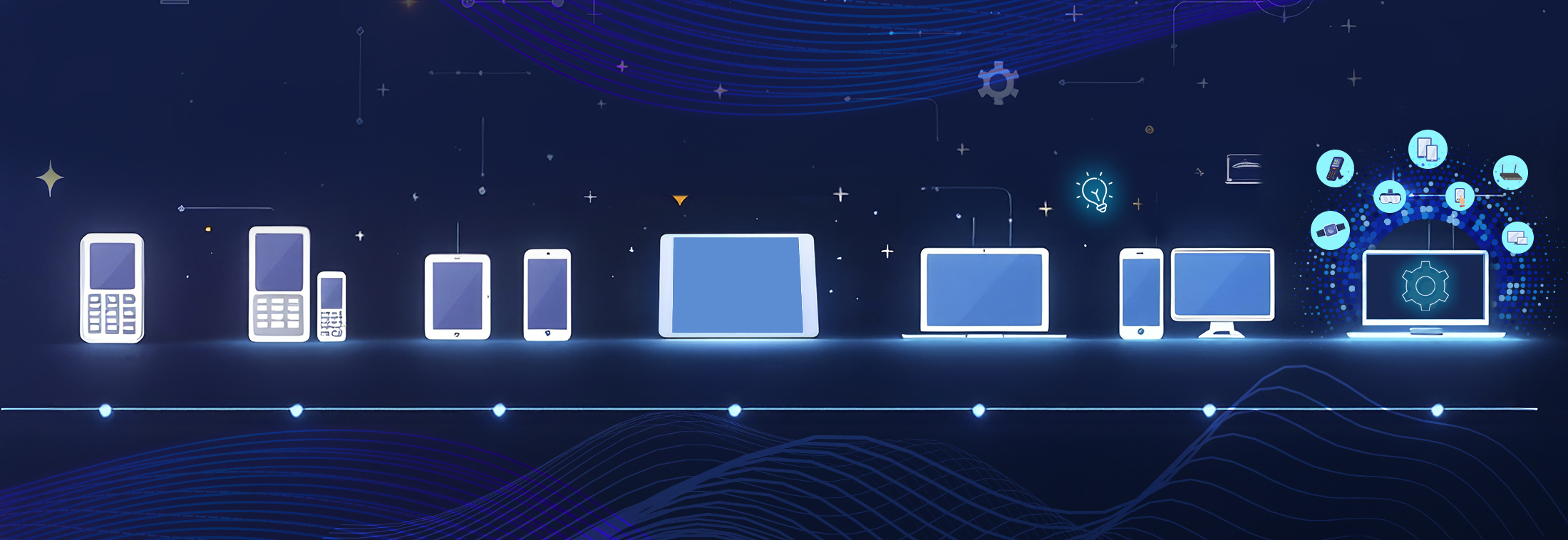The History and Evolution of Mobile Device Management (MDM)
fev 03, 2025 | Upasna Kesarwani
Mobile devices are integral to our personal and professional lives. Smartphones, tablets, and laptops have become indispensable tools for communication, productivity, and entertainment. As the use of these devices has grown, so has the need to manage them effectively, especially in business environments. This need gave rise to Mobile Device Management (MDM), a technology that has evolved significantly over the years. Let’s journey through MDM's history and evolution, exploring its origins, growth, and impact.
The Beginnings: The Advent of Mobile Technology
The roots of MDM can be traced back to the early days of mobile technology in the 1990s. The launch of the first commercial mobile phones marked the beginning of a new era. However, these devices were rudimentary by today’s standards, offering basic voice calling and limited functionality. As businesses began adopting mobile phones, the need to manage and secure these devices became evident.
In the late 1990s, Personal Digital Assistants (PDAs) like the PalmPilot emerged. These devices offered email and calendar functionalities, making them popular among professionals. Organizations started seeking ways to manage these devices remotely, which laid the groundwork for MDM solutions.
The Early 2000s: The Rise of Enterprise Mobility
The early 2000s saw a surge in mobile device adoption, driven by advancements in wireless technologies like 2G and 3G. This period also witnessed the introduction of the first MDM tools. These early solutions were primarily focused on managing specific devices that dominated the enterprise market. Enterprise server tools were among the first to allow IT administrators to manage and secure corporate data on mobile devices.
A notable example from this era is how these tools enabled financial institutions to ensure secure communication. For instance, a leading investment bank used enterprise servers to encrypt emails and manage devices remotely, ensuring compliance with regulatory requirements.
The Smartphone Revolution: A Game Changer
The launch of the Apple iPhone in 2007 and Android devices shortly thereafter marked a significant turning point in the evolution of MDM. These smartphones introduced app ecosystems, touch interfaces, and advanced connectivity, making them appealing to both consumers and businesses. However, the diversity of operating systems posed new challenges for IT departments.
To address this, MDM solutions evolved to support multiple platforms. Companies like 42Gears developed tools to manage iOS, Android, and Windows devices. These solutions offered features such as:
- Remote device wipe for lost or stolen devices.
- Application management to control app installation and usage.
During this time, several global pharmaceutical companies adopted MDM solutions to manage the devices of their field representatives. By enabling secure access to customer data and sales materials, these companies boosted productivity while ensuring compliance with data protection regulations.
The 2010s: The Era of BYOD and Advanced Security
The 2010s brought a significant shift with the Bring Your Own Device (BYOD) trend. Employees began using personal devices for work, blurring the lines between personal and professional use. While BYOD increased flexibility and productivity, it also introduced security risks and management challenges.
MDM vendors responded by introducing advanced features like:
- Mobile Application Management (MAM): Controlling and securing specific apps rather than entire devices.
- Mobile Content Management (MCM): Ensuring secure access to corporate documents.
- Geofencing: Restricting device usage based on location.
A notable example is the adoption of MDM in healthcare. Hospitals leveraged MDM to ensure doctors could access patient records securely on their tablets while complying with regulations like HIPAA (Health Insurance Portability and Accountability Act). One hospital implemented geofencing to restrict access to sensitive data outside its premises, enhancing security.
The Present and Future: Unified Endpoint Management (UEM) and Beyond
Today, MDM has evolved into Unified Endpoint Management (UEM), reflecting the convergence of mobile and desktop device management. UEM solutions provide a holistic approach, enabling organizations to manage smartphones, tablets, laptops, and even IoT devices from a single platform. Modern UEM tools integrate artificial intelligence (AI) and machine learning (ML) to predict and prevent security threats.
For example, a global retail chain uses UEM to manage point-of-sale devices, ensuring seamless operations and protecting customer data. The solution’s AI capabilities identify potential vulnerabilities, allowing the IT team to address issues proactively.
Looking ahead, the future of MDM will likely involve:
- 5G Integration: Managing devices in an ultra-connected world with faster speeds and lower latency.
- Zero Trust Security: Enhancing authentication and access controls.
- Edge Computing: Managing devices and data closer to the source for real-time decision-making.
Conclusion
From the early days of managing basic mobile phones to the sophisticated UEM solutions of today, the evolution of MDM has been remarkable. As businesses continue to embrace mobility and technology, MDM will remain a cornerstone of secure and efficient device management. By learning from its history, organizations can better prepare for the challenges and opportunities that lie ahead in the ever-evolving digital landscape.
Stay ahead in the ever-evolving
digital landscape with our
MDM solution.
Subscribe for our free newsletter


